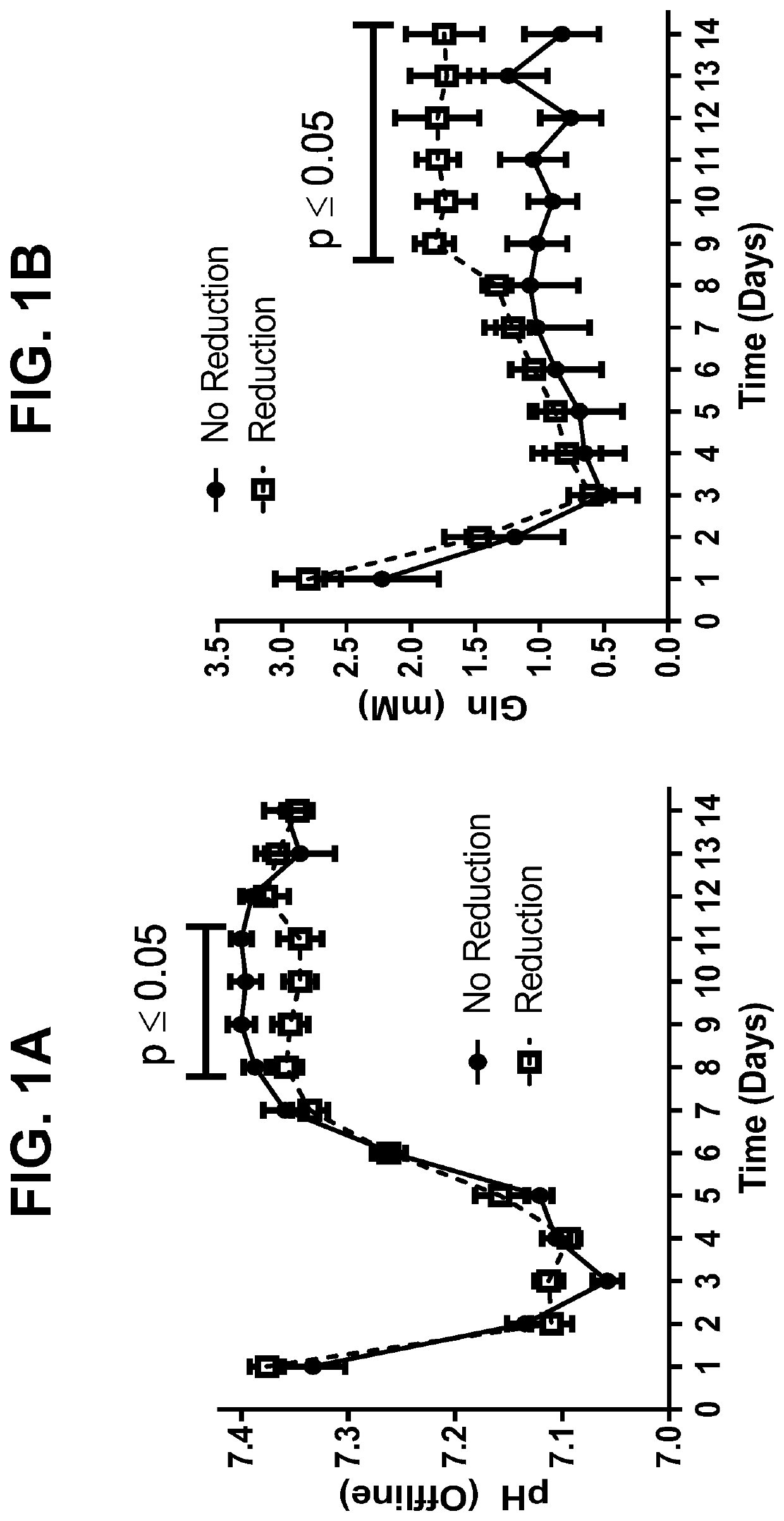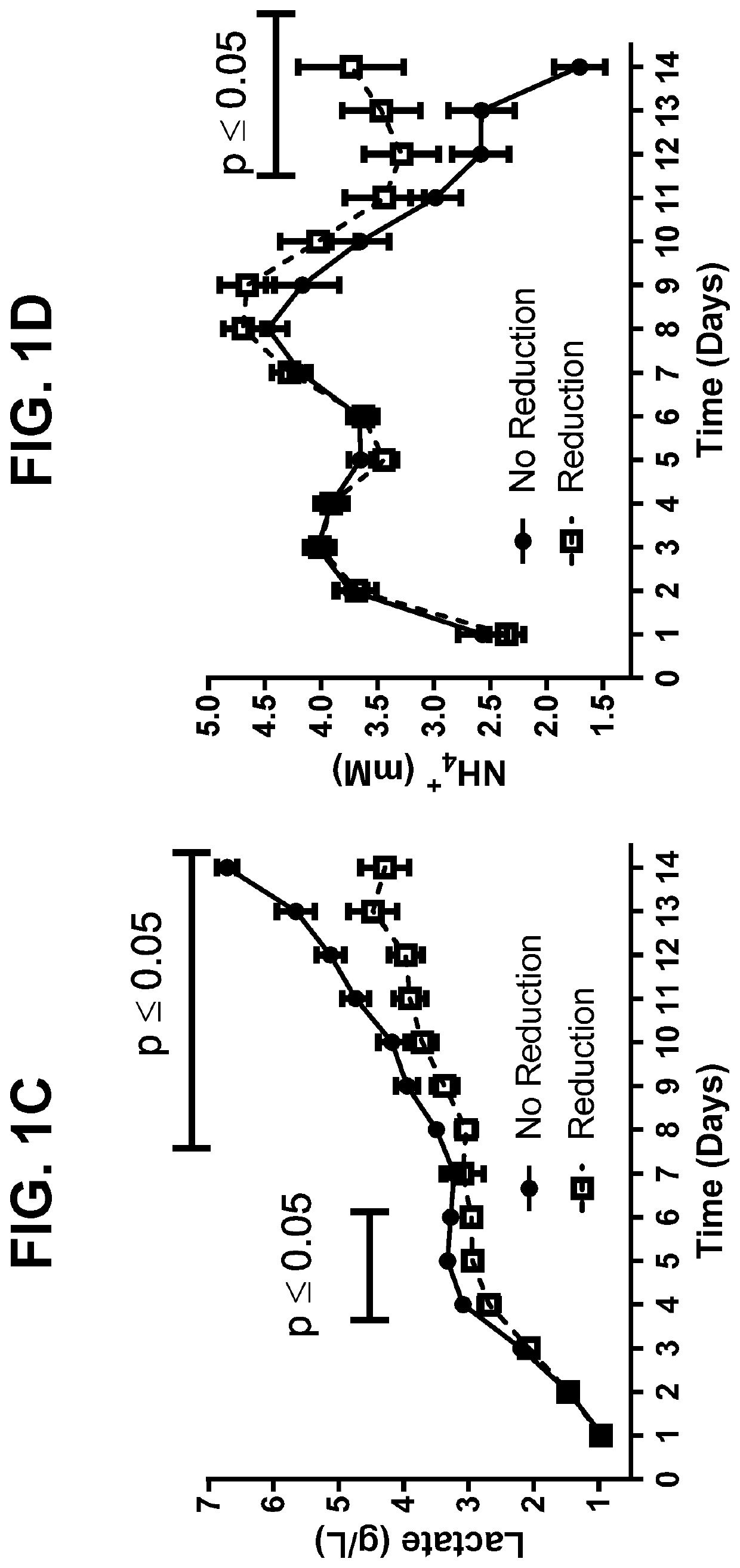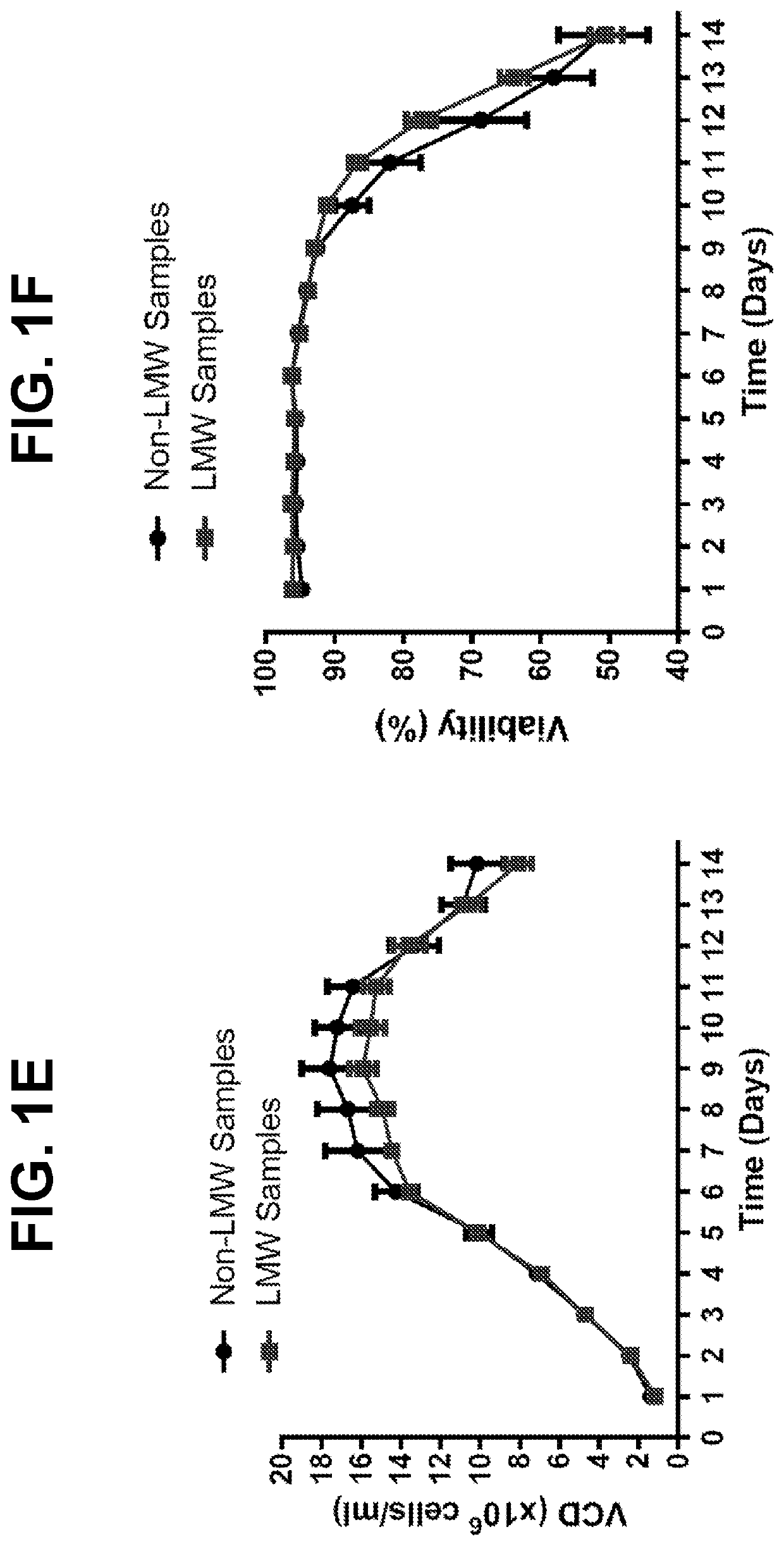Metabolic enzyme activity and disulfide bond reduction during protein production
a technology of metabolic enzymes and disulfide bonds, applied in the direction of antibody medical ingredients, instruments, peptides, etc., can solve the problems of affecting mab stability, disulfide reduction is a direct risk to product stability, potency, patient safety, and the cellular mechanism leading to increased reductase activity and expression in hccf remain unclear
- Summary
- Abstract
- Description
- Claims
- Application Information
AI Technical Summary
Benefits of technology
Problems solved by technology
Method used
Image
Examples
example 1
Cell Culture Conditions and Preparation of Samples for Analysis
[0155]A proprietary cell culture medium and two proprietary recombinant CHO cell lines expressing different IgG antibodies were used for the experiments described in the following Examples. The cell culture medium was chemically defined and fully serum free. Recombinant IgG producing CHO cells were maintained in suspension culture in 250-mL, 1-L and 3-L shake flasks, and a CO2 shaker incubator (Kuhner) was used for incubation at 36.5° C., 150 rpm, at a CO2 concentration of 5%.
[0156]Lab scale reactor cultivations for both N−1 seed and Fed-batch production were carried out in 5-L stirred tank reactors (Sartorius). All the 5-L reactors were equipped with two 45° pitched tri-blade impellers, pH and DO probe. In the N−1 seed, cultivations were inoculated from 3-L shake flask cultures in the range of 0.4-0.8×106 cells / mL and at a temperature of 36.5° C. The initial working volume of the 5-L bioreactor was at 3 L. pH was contro...
example 2
Comparison of Bioreactor Performance Across LMW-Forming and Non-Forming Batches
[0160]In order to assess reduction risk for a monoclonal antibody (mAb A), HCCF aliquots from batches produced during two separate manufacturing campaigns were held under low dissolved oxygen conditions overnight, purified by protein A and screened for the presence of disulfide reduction by capillary electrophoresis (results summarized in Table 1). Out of eleven lots tested, reduced mAb species were detected in the protein A eluate of nine batches, with only two batches (C1L2 and C2L2) showing no reduction.
TABLE 1Summary of mAb A Disulfide ReductionFrom Manufacturing Campaign BatchesBatch NameMonomer %LMW1 %Product PoolC1L196.73.3Drug SubstanceC1L298.91.1Protein A EluateC1L496.73.3Protein A EluateC1L563.936.1Protein A EluateC1L67.992.1Protein A EluateC1L713.786.3Protein A EluateC2L169.930.1Protein A EluateC2L299.20.8Protein A EluateC2L330.070.0Protein A EluateC2L61.798.3Protein A EluateC2L77.492.6Protein ...
example 3
Proteomics Analysis of HCCF in Disulfide Reduced and Non-Reduced Samples
[0162]To better characterize cell culture conditions that may influence disulfide bond reduction potential in harvested cell culture fluid (HCCF), two cultures were harvested at separate points to compare normal (NC D14) and low viability (LVC D15) conditions associated with production of a monoclonal antibody. Disulfide bond reduction was evaluated under multiple storage conditions by capillary electrophoresis. Briefly, HCCF from laboratory-scale, pilot-scale, and / or clinical manufacturing-scale cultures was warmed to room temperature, sterile filtered in a biosafety cabinet, and split into sterile single use media bottle assemblies equipped with luer lock sterile air filters. Samples to be tested for disulfide bond reduction were sparged with nitrogen for 30-60 minutes to remove dissolved oxygen, after which bottle inlets and outlets were sealed. Samples were stored at either 2-8° C. or room temperature for 24...
PUM
| Property | Measurement | Unit |
|---|---|---|
| temperature | aaaaa | aaaaa |
| temperature | aaaaa | aaaaa |
| temperature | aaaaa | aaaaa |
Abstract
Description
Claims
Application Information
 Login to View More
Login to View More - R&D
- Intellectual Property
- Life Sciences
- Materials
- Tech Scout
- Unparalleled Data Quality
- Higher Quality Content
- 60% Fewer Hallucinations
Browse by: Latest US Patents, China's latest patents, Technical Efficacy Thesaurus, Application Domain, Technology Topic, Popular Technical Reports.
© 2025 PatSnap. All rights reserved.Legal|Privacy policy|Modern Slavery Act Transparency Statement|Sitemap|About US| Contact US: help@patsnap.com



